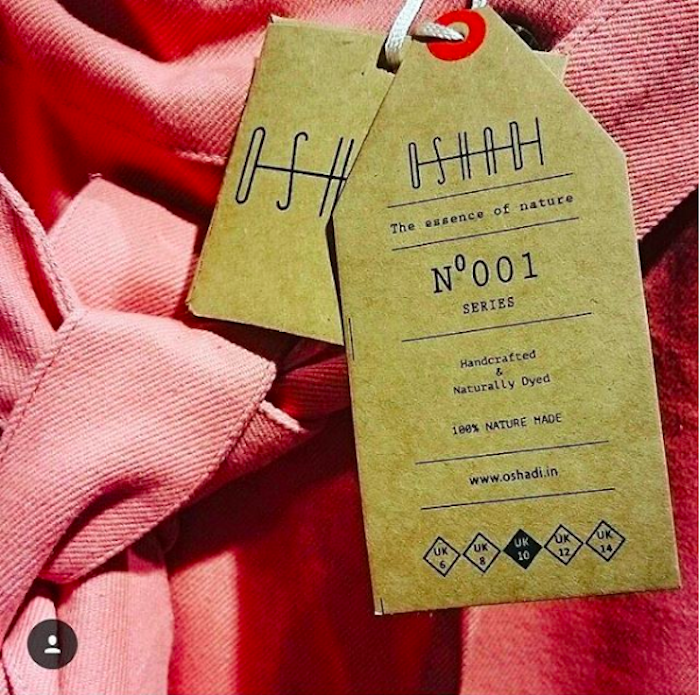Lesson Plan June 27, 2016
Environmental Sustainability in India's Fashion Industry
Country:
Grades:
Questions for "Young, Indian Entrepreneur Challenges the Way Our Clothes Are Made and Marketed"
- What are some of the solutions that Chopra's company has explored?
- What are the challenges Chopra faces in making his company environmentally sustainable?
- What do you think is the author’s purpose for writing this piece?
Objective:
You will be able to analyze how a journalist responds to different viewpoints on sustainability practices in the Indian textile industry in order to conduct a research project that analyzes sustainability practices by a textile company in your country.
Warm-up:
Write your responses to the following question on a separate sheet of paper:
- What is your favorite outfit?
- How do you choose what clothes you wear?
- How do you choose where you buy your clothes?
- How important is it to you that your clothes be made in a way that is environmentally stable?
Introducing the Lesson:
Today you will explore clothing manufacturing in India by reading the article "Young, Indian Entrepreneur Challenges the Way Our Clothes Are Made and Marketed" by journalist Esha Chhabra.
In the article, Chhabra writes, "If fashion is the second largest polluting industry in the world, the source of much of that pollution lies in South India where textile manufacturing has destroyed rivers, depleted top soil, and exposed workers to toxic chemicals."
Make some predictions about the article prior to reading by writing your responses to the following questions:
- How might the fashion industry be causing pollution?
- How might the fashion industry be leading to the environmental effects that Chhabra describes?
- As you read the article, check to see if your answers were correct.
The article goes on to explore how Indian entrepreneur Nishanth Chopra has focused on designing and manufacturing clothes in a way that doesn't impact the environment negatively. In the article, Chopra is quoted as saying, "I want to build a fashion house that's about sustainability, as much as it is about style… I grew up, seeing my family always put back part of their earnings into charity. Now I want to see if we can take it a step further and do good, while making money.
Make some predictions about how a clothing company can be both sustainable and profitable by responding to the following questions:
- How might Chopra make his business sustainable?
- What might be some of the challenges to creating a clothing company that doesn't negatively impact the environment?
- As you read the article, check to see if your answers were correct.
Introducing the Resource "Young, Indian Entrepreneur Challenges the Way Our Clothes Are Made and Marketed"
Read the article and answer the questions attached. As you read, keep track of how Chhabra balances the solutions her subject has tried and the challenges her subject has faced. Use a table like the one below to keep track of the details Chhabra includes to present the challenges and solutions that Chopra experiences:
| Challenges to creating a sustainable business | Solutions Chopra has tried |
Also, pay attention to the way that Chhabra introduces the details of the story. Consider the following:
- How does Chhabra present her subjects? How do you imagine them based on her descriptions?
- What do you think is Chhabra's goal in writing this article?
- What is sticking with you from this article? What do you still want to know more about?
Extension Activities:
1. Using details from Chhabra's article, write a letter to a clothing company that describes the challenges and benefits to creating more sustainable clothing companies. You can decide whether or not to recommend the practices Chopra employs to the company you are writing to. In order to decide which company you should address your letter to, conduct a search for clothing companies with records of poor environmental practices.
2. Pick a company whose clothes you really enjoy and research the company's environmental practices. Like Chhabra, write a brief report outlining the solutions the company has explored, and the challenges the company has faced, as it has tried to become more environmentally sustainable.
This lesson plan outlines reflection exercises and research projects connected to Esha Chhabra's reporting on environmental sustainability practices in India's fashion industry. The lesson is written for students to be able to explore the resources and activities independently, but the lesson could be modified to include more discussion and group work.
CCSS.ELA-LITERACY.RI.8.6
Determine an author's point of view or purpose in a text and analyze how the author acknowledges and responds to conflicting evidence or viewpoints.




